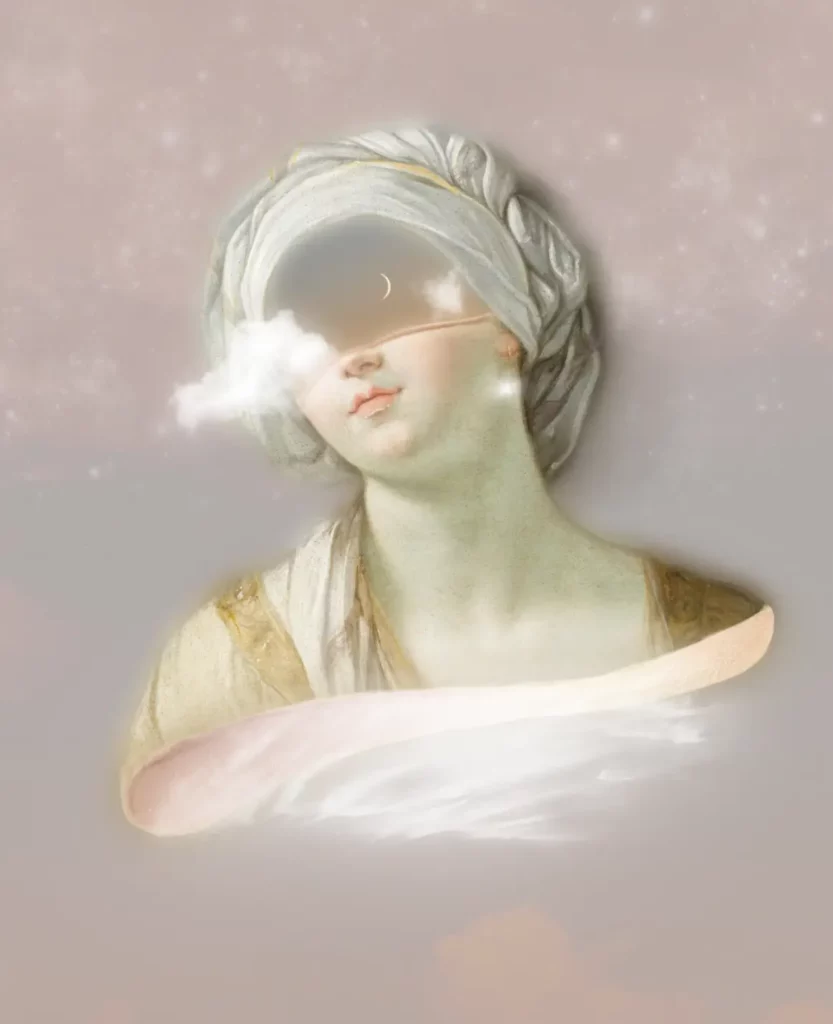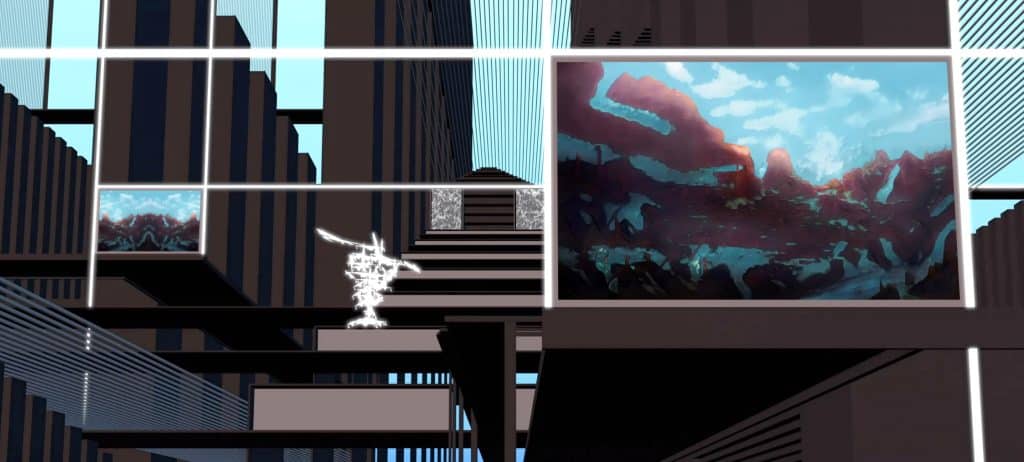Non-fungible tokens (NFTs) have come a long way since they entered the scene in 2014 with Kevin McCoy’s Quantum, a pulsing, pixelated and color-changing hexagon. In 2017, Larva Labs studio created CryptoPunks, a collection of 10,000 original NFTs of punk characters that anyone with an Ethereum wallet could claim for free.
That same year, Vancouver-based studio Axiom Zen introduced CryptoKitties, a game that had users buying, breeding, collecting and selling virtual cats. CryptoKitties quickly went viral, clogging the Ethereum blockchain — and making many players astronomical profits. While NFTs were popular among the tech savvy, they were largely unknown — or scoffed at — by the masses.
Then, in March, 2021, Christie’s auction house sold an NFT by digital artist Mike Winkelmann, known as Beeple, for $69 million, making headlines everywhere and lending mainstream legitimacy to NFT art.
This opened the way to marketplaces where the less tech adept could join in the fun. Some, like OpenSea and Rarible, resemble NFT department stores, selling non-fungible tokens of every type imaginable; others specialize in certain types. Recently, 1stDibs launched our own NFT art platform.
We’ve also written a number of articles on these crypto-wonders. But as more and more creators and collectors dip their toes in the NFT waters, we thought it was time for a deeper dive into how they work.
Blockchain: The Foundational Technology of NFTs
A blockchain is a digital ledger that can store any type of data and record all sorts of information. This ledger is composed of individual transactions, or blocks of data, that form a chain — hence its name.
Blockchain ledgers are completely decentralized. While a garden-variety digital ledger — like an Excel spreadsheet or virtual database — is stored on a single, centralized computer and can be changed and manipulated by anyone with access, blockchain ledgers live on multiple computers that are spread across a network.
These specialized computers, known as nodes and run by individuals or organizations known as node operators, perform complex mathematical calculations to verify each new block of data and add it to the blockchain. The decentralization of the blockchain is what enables its autonomy, and it’s the consensus of numerous unrelated node operators all over the globe that keeps it trustworthy.
If a majority of node operators verify a blockchain transaction, all the nodes are updated to make their versions identical. As compensation for their efforts — known as mining — node operators are rewarded with funds in the native cryptocurrency of the blockchain.
At any given moment, the blockchain represents a snapshot of every transaction completed from the beginning of the ledger to the present. Public blockchains are open to participation and scrutiny by anyone with an Internet connection. And since no single person is in charge of it, the blockchain is nearly impossible to alter without the consensus of all in the node network.
Smart Contracts: The Brains behind the Blockchain
The really important thing about blockchains is that blocks of data can be encoded with specific instructions that execute when certain conditions of a transaction are met. These embedded instructions, known as smart contracts, are automated agreements between two or more parties — usually complete strangers — who are engaging in a transaction like buying or selling NFTs.
A smart contract is essentially an if-then statement. If all the conditions are met — for example, if the funds are available — then the contract is honored, and the new ownership of the NFT is recorded on the blockchain.
Smart contracts are:
Transparent. Anyone with an internet connection can inspect the blockchain and view an NFT’s smart contract.
“Trustless.” You don’t have to place your trust in a stranger, institution or any other third party. Instead, you’re trusting the consensus of the decentralized network of unrelated node operators, who perform complex mathematical acrobatics to verify the authenticity of a transaction and allow it onto the blockchain.
Inextricable from the NFT. Since the smart contract is embedded in the NFT’s code, it’s generally irreversible and unalterable. If any entity tries to change the code on the blockchain, the nodes will notice and stop it.
Autonomous. Smart contracts don’t need third-party intermediaries like dealers, platforms and financial institutions to implement them. If all parties uphold their ends of the smart contract, it executes automatically, so there’s no need for dispute resolution. If they don’t uphold their ends, the contract resets, and all bets are off.
Smart contracts allow people to conduct financial business in real time; there’s no waiting for a government, lawyer or bank to arrange, approve or confirm the transaction. Creating a smart contract doesn’t require coding knowledge — anyone can write one. Smart contracts embedded in NFTs can include access to special deals, virtual or in-person events or private communities on instant messaging and digital distribution platforms like Discord.
So, What Exactly Is an NFT?

A non-fungible token is a digital token that represents ownership of a unique item, like a work of art or a poem or a plot of virtual land. The process of turning an asset into an NFT is known as minting. The moment an NFT is minted, an immutable and unalterable record of its creation and ownership is added to the blockchain, establishing provenance. From that day on, every transaction involving that NFT will be recorded on the blockchain and will follow the instructions of the smart contract.
An NFT can have only one owner or group of owners at any given time. Once created, an NFT can’t be destroyed or deleted from the blockchain. But it can be removed from circulation through “burning.” This involves transferring the NFT to an inaccessible wallet address, where it will languish until the end of days, never to be seen again.
NFTs vs. Cryptocurrencies
NFTs use the same type of programming language as cryptocurrencies, but they have different standards. These standards dictate the rules and actions a token or smart contract must follow for implementation. The most commonly used ones on the Ethereum blockchain are ERC20 and ERC721. ERC20 and ERC721 tokens have some key differences.
ERC20 tokens — like Ethereum’s own cryptocurrency, Ether — are fungible, meaning that one such token is equal in value to any other, just as a dollar bill is exchangeable for any other dollar bill.
ERC721 tokens are non-fungible tokens, or NFTs. They are minted with completely unique identifiers and are therefore not interchangeable. Just as a Picasso canvas isn’t interchangeable with a Van Gogh, a Beeple NFT isn’t interchangeable with an Isa Kost NFT.
What Are NFTs Used For?
So, what do you do with an NFT once you purchase it? Well, that depends on the type of NFT it is and what you want to use it for. Generally speaking, people buy NFTs for a few main reasons:
- For Bragging Rghts. Buying an NFT gives you sole ownership of an original, one-of-a-kind digital asset. The NFT is a certificate of authenticity that creates scarcity and value.
- As an Investment. It’s too early to tell whether NFTs will continue to increase in value over the long term, but if they do, investing in an NFT could pay off in a big way down the road.
- As Collateral for a DeFi Loan. NFTs can be used as collateral to secure a loan in the world of decentralized finance, or DeFi, a system of peer-to-peer financial services that operate on public blockchains.
- To Use in the Metaverse. In the metaverse, digital assets are real assets. You can purchase a plot of land and build an art gallery on it to show and sell your NFT artwork.
What Can Be Made into an NFT?
While art is the most popular form of NFT and sells for the highest prices, an NFT can be almost anything you can imagine that’s unique and requires proof of ownership, including:
- Viral Memes and Videos. The creators of famous memes are enjoying a payday that would have been impossible before NFTs; the famous Doge meme, for example, sold for $4 million in 2021.
- Fashion. Recently, a Gucci purse NFT sold for more than the market value of its physical counterpart.
- Domain Names. An NFT domain lives on the blockchain rather than a central server and gives you total control over your content.
- Trading Cards and Collectibles. Curio Cards is a collection of art trading cards that come in sets of 30, each set currently selling for up to $1.2 million.
- Music. Musicians can mint and sell NFTs of their compositions and, depending on the details of the smart contract, receive royalties on them.
- Fundraising Programs. NFT charity auctions have offered an attractive new way to raise money as traditional fundraising has become more expensive.
- Awards. In 2021, Adweek presented its Creator Visionary Awards in the form of animated 3D artworks, each created in the image of its recipient.
- Real Estate. In Decentraland, Ethereum’s expansive metaverse, you can purchase land in the form of non-fungible LAND tokens.
- Proof of Attendance. Proof of Attendance Protocols, or POAPs, are the NFT equivalent of the concert ticket stubs and conference lanyards you save for posterity.
Creating, Minting and Selling NFT Artworks

Minting a physical or digital artwork into an NFT is surprisingly easy. The majority of NFTs are open source, which means you can mint an NFT on one Ethereum-based platform or marketplace and sell it on one or more different Ethereum-based marketplaces — like 1stDibs.
How Does an Artist Get Royalties on an NFT?
Traditionally, artists who sell their work in galleries receive only around 50 percent of the sale price, and if a buyer later sells a piece on the secondary market, its creator gets nothing.
NFTs give artists, musicians and other creators full control over their content. When a creator mints an NFT, the smart contract may include provisions for royalties. In this case, when the NFT sells, the creator gets paid not only the initial sale price but also a percentage of subsequent sales. The buyer owns the content and shows it off, and as it becomes popular, its value increases.
When the buyer resells an NFT, the artist gets a cut, generally 10 percent. Since these royalties are written into the blockchain, it doesn’t matter how many times a piece changes hands or where it lands — the royalties will always be paid to the creator as long as the NFT exists.
Determining the Scarcity of an NFT
Until the advent of NFTs, creating scarcity online was incredibly difficult, because content of all kinds is so easy to copy, share and distribute and a digital copy is essentially the same as the original. This abundance makes it hard to assign content a value. NFTs, however, are verifiably unique, and their provenance is publicly accessible and inherently immutable, so it’s now possible to create scarcity.
Do You Have to Pay Taxes on NFT Sales or Purchases?
Creators who sell their NFTs have to pay taxes on them, just as they would on physical works of art. And collectors who buy NFTs have to pay taxes on their purchases, just as they would on a painting they bought at a gallery. The top of the 1040 form asks if you received, sold, exchanged or otherwise disposed of any financial interest in a digital currency during the past tax year.
The Future of NFTs and Blockchain

Today’s blockchains, while rich with potential, are a new frontier. Emerging technologies could make them look like 1996’s Internet in just a few years — and that makes it hard to predict where blockchains, cryptocurrencies and NFTs will be in the future. But one thing is certain: Blockchains have already transformed — and will continue to do so — the ways in which we interact with each other and conduct transactions online.
Investors who believe in the potential of blockchains and the value of NFTs and other digital investments may be very richly rewarded down the road for their faith and risk taking. In another, less likely scenario, they may wake up one day and find that the value of their crypto-funds and one-of-a-kind virtual assets has bottomed out — or dissipated into the ether of the metaverse, never to be seen again.
Whatever the future of NFTs, the present-day gold rush into the largely untapped metaverse and all it contains is a thrill ride of discovery and possibility. It’s a stark and historical departure from the only reality humankind has known until now. And that’s hard to resist, no matter how high the stakes.
